We left El Tor at 12:30 a.m. on November 28. We left at that time to catch the best weather and ensure we would arrive in Suez on the 29th.
We had another “first” on this short trip. We were happily motoring along and all of a sudden our engine lost RPMs. I mean, down to just about no RPMs. It kept running, but wouldn’t rev up. We’d checked the fuel tank filter before we left, but we checked it again to be sure. It was clean. We’d turned off the engine and turned it back on. It started right up but it was shaking a lot. Michael asked me to put it in forward, neutral and reverse while he looked at the engine. He told me he thought we had an issue with the prop.
This happened when we were right on the edge of the shipping lane in a very busy Gulf of Suez. Thankfully (!!) the winds were extremely light and there were basically no waves. The little movement we had while we were working on the problem moved us slightly farther away from the shipping lane. This allowed us to work on the problem without worrying that we would end up smack dab in the middle of the lane.
Michael donned his dive mask and stainless steel knife and dove down. When he came up the first time, he told me that there was a bunch of plastic wrapped around the prop. He went down about four times and then handed a very large bundle of plastic and other stuff (I think it had to do with fishing) to me. He asked me to go down to finish the job, which I did. I only had to unwind a string from the prop to clear it entirely. I dove down a second time just to make sure the prop was clear. It was. We started the engine, revved her right up and went on our merry way.
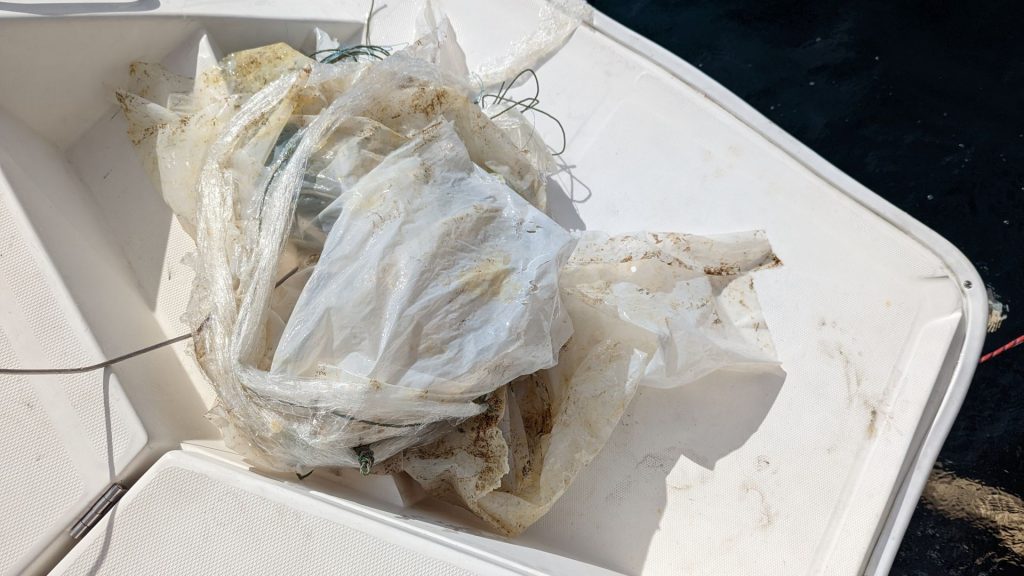
We arrived in Suez at about 1:00 a.m. on November 29. We’d been told that we didn’t need to contact Port Control since we were going to anchor in the waiting area. Somehow (we are both hard of hearing, so maybe that’s why?) neither one of us realized that Port Control was calling us on our VHF radio as we neared Suez. Lo and behold, a pilot boat motored up to us with their big light turned on and told us to call Port Control. We did, they gave us coordinates, and we anchored.
We went to the Suez Yacht Club to moor the next morning. We followed a Pilot boat to the mooring area and were assisted by a few folks. We are connected to the dock so it is easy to get off and on Seahike. Nice!
Our agent met us at our boat and presented us with a large box of Egyptian sweets. I would describe the taste as honey and butter mixed with other stuff. Yum!
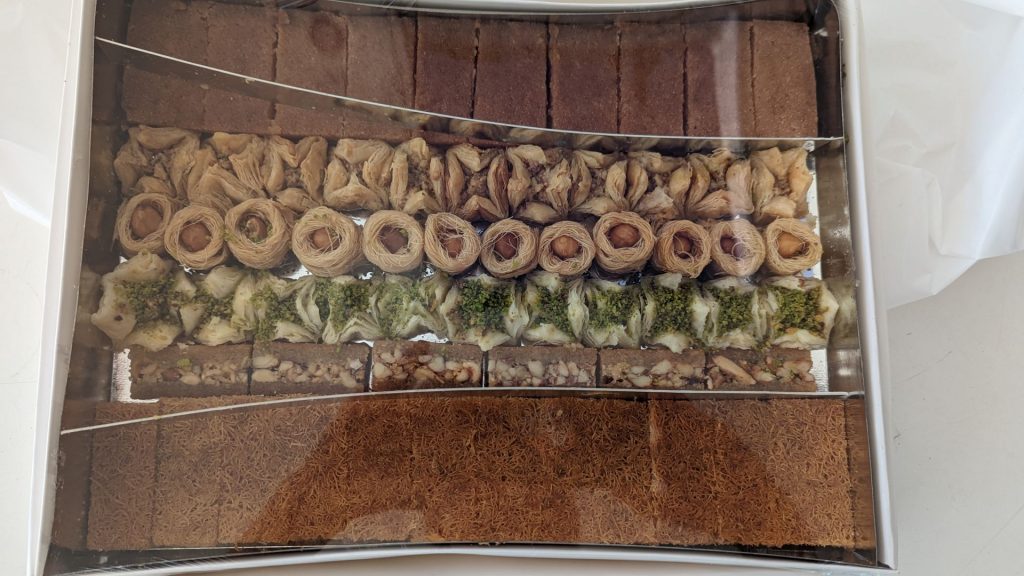
Mustafa (our agent) treated us to dinner at an Egyptian restaurant that night. We ate the national Egyptian dish, Koshary (spelled two other ways as well). It consists of a lot of good stuff, including rice pasta, brown lentils, chickpeas, and crispy fried onions. It is served with a zesty tomato sauce. We also poured some hot (hot temperature, not spicy) sauce on it. It was very yummy! We walked a bit after dinner, got ice cream, and saw some sights.
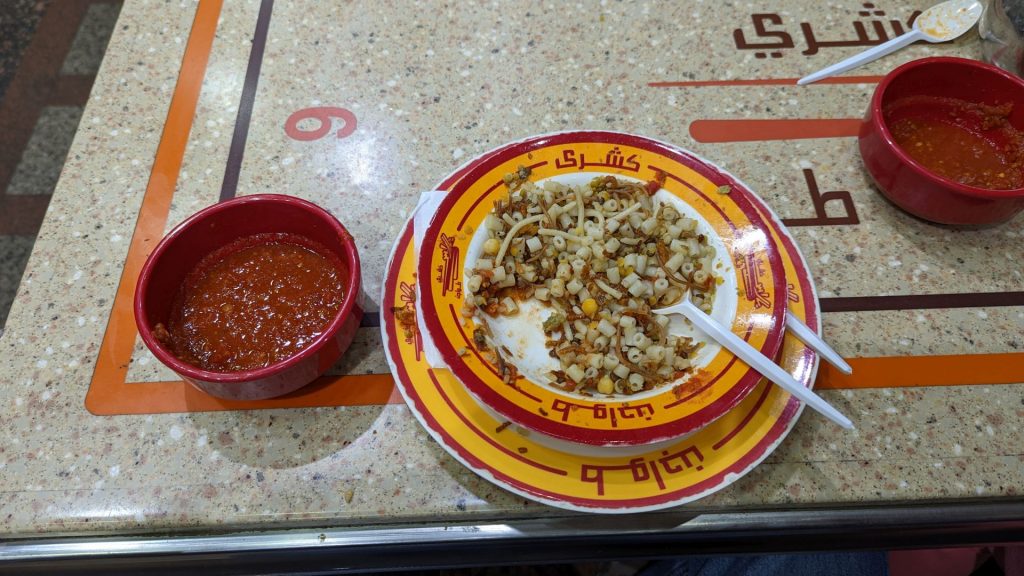
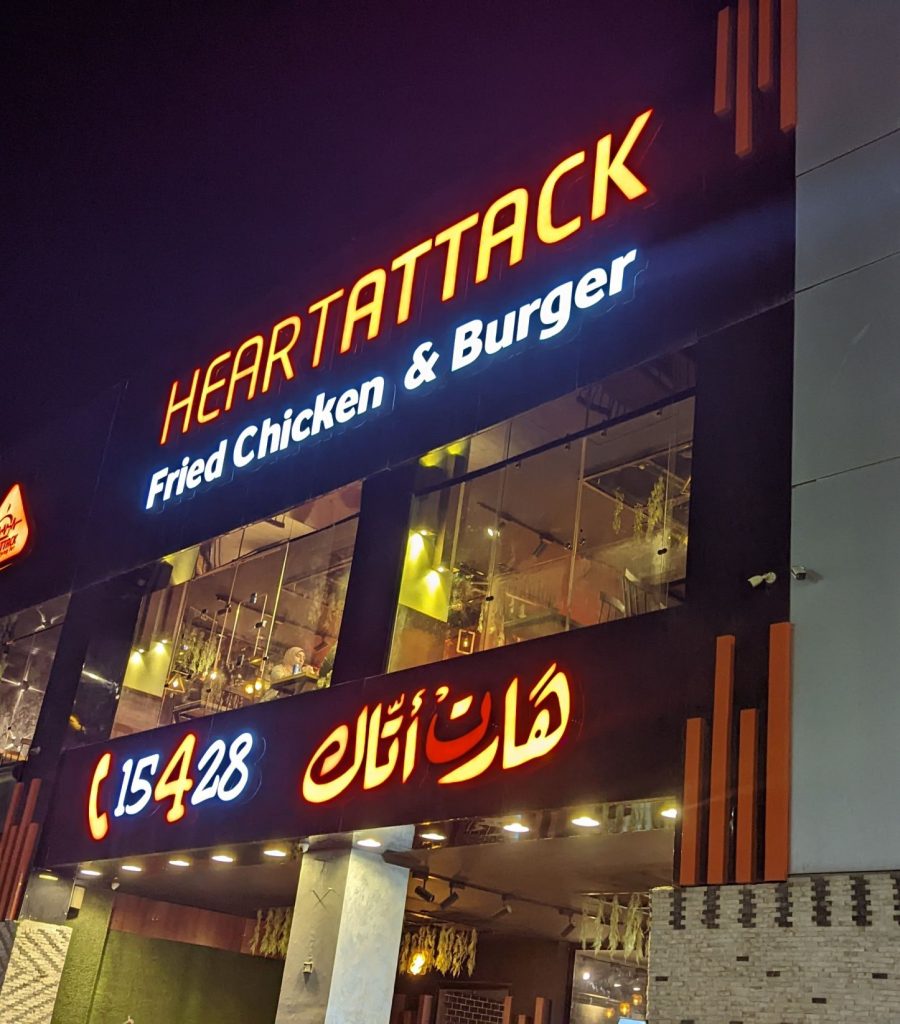
Of course we ate there!
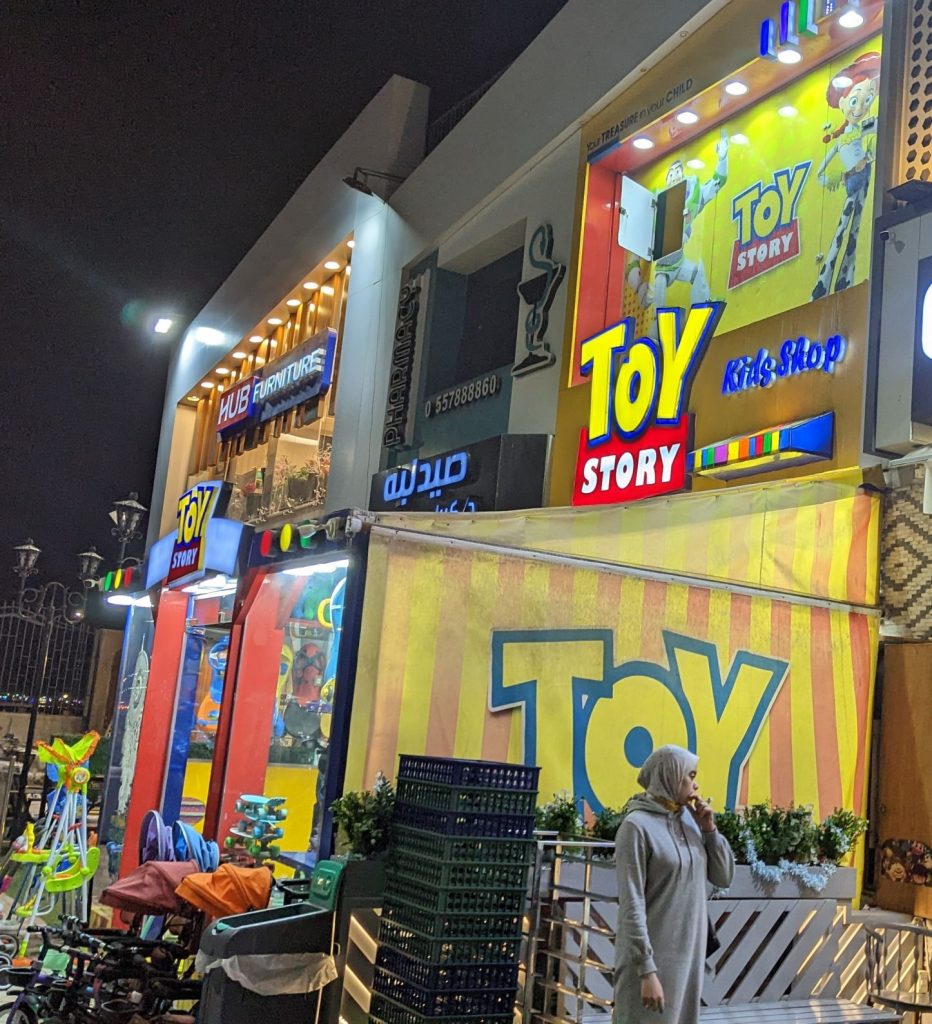
Our agent (with Felix Maritime Agency) arranged a two-day tour for us in and around Cairo. We listed what we wanted to do and they developed the perfect itinerary, including a kick a** hotel that was nicer than we could have imagined.
Before we share tidbits about our trip, I want to share a big takeaway with you. The one thing I NEVER want to do in Egypt is drive a car! Folks here might know the rules of the road, but they ignore them entirely. Lane markers are barely suggestions. I think we’ve seen one stop light/stop sign at an intersection. From our viewpoint, you know it is your turn to go by *making* it your turn to go, which often involves driving within six inches of another vehicle and tooting your horn. Oh, and the roads are a mixture of cars, motorcycles (who simply weave between the cars, heedless of lanes), pedestrians (even on five-lane roads!), and carts pulled by donkeys. We saw very few carts on this trip, but they were numerous on the way to and from Luxor, as well as in Luxor.
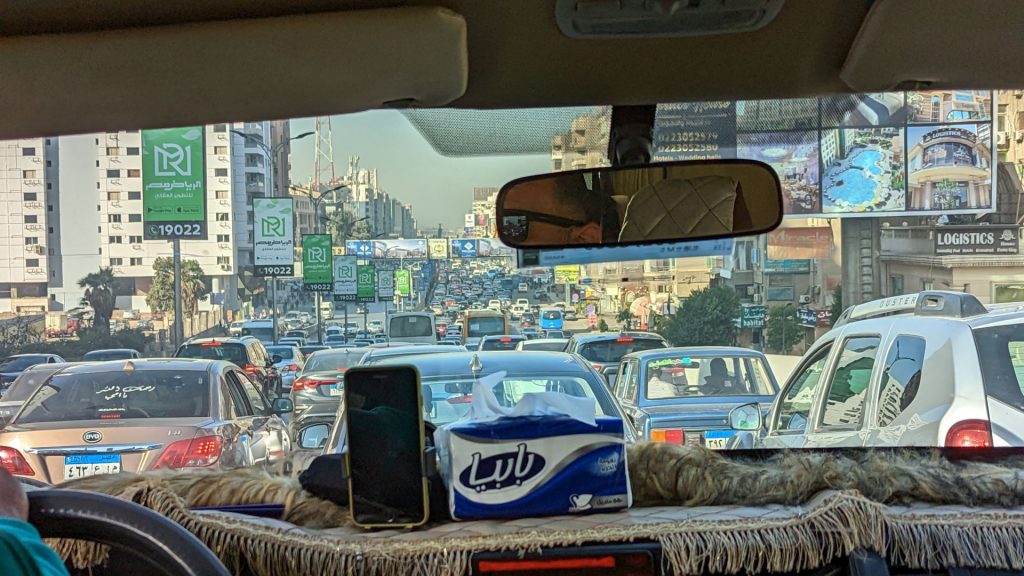
We had a busy day on November 30. We went to the Egyptian Museum, saw the Great Pyramid of Giza, the Pyramid of Khafre, the Pyramid of Menkaure (along with their associated pyramid complexes), the Great Sphinx of Giza, and we went on a Nile River dinner cruise.
The Egyptian Museum is in the process of moving to a new location. We were told that 80 percent of the content has already been moved. Still, the 20 percent left behind appears to be the “choice” content. I am almost glad that we were only seeing 20 percent because it was still a lot and my brain cannot retain everything we saw and heard. Here are a few pictures:
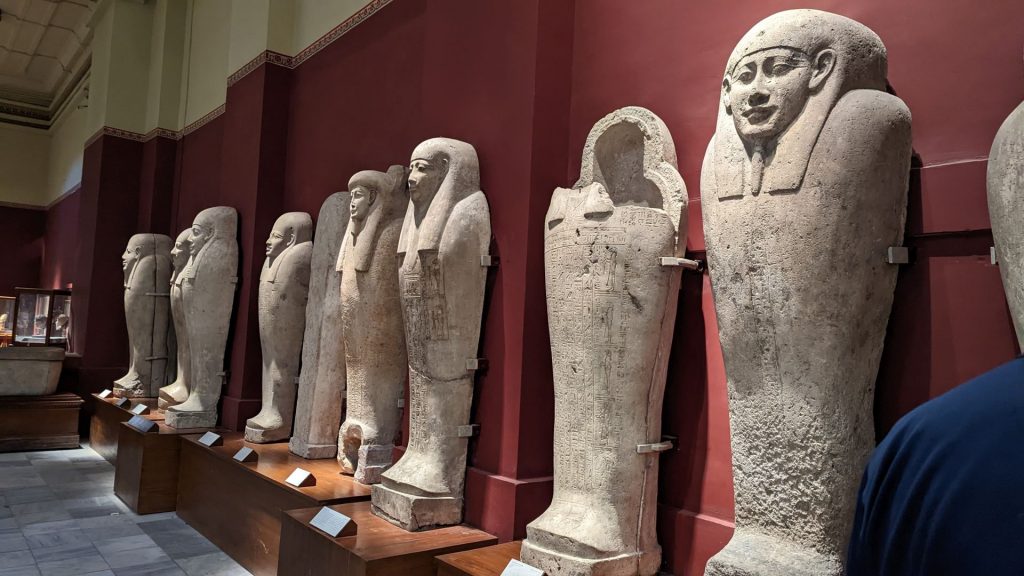
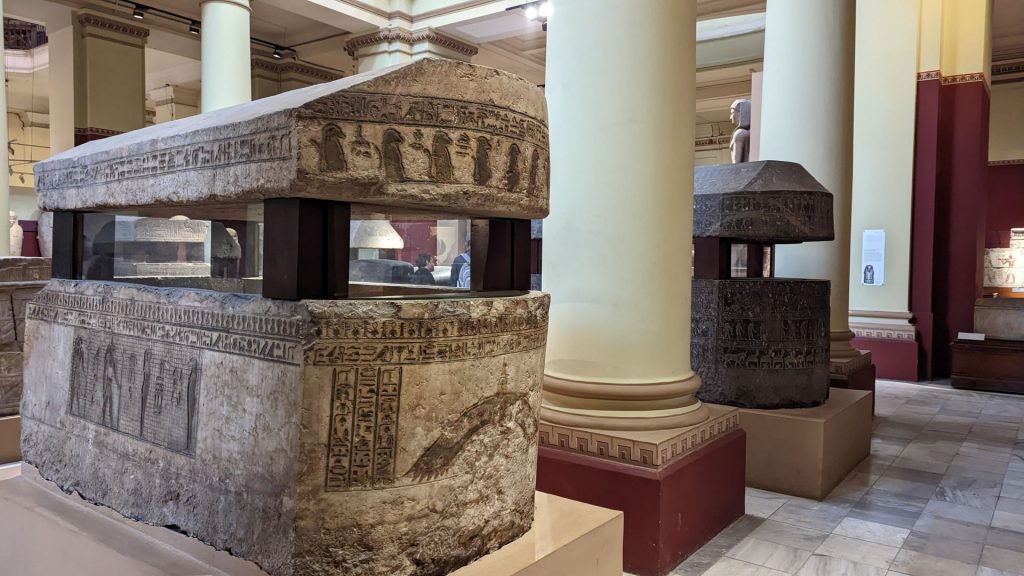
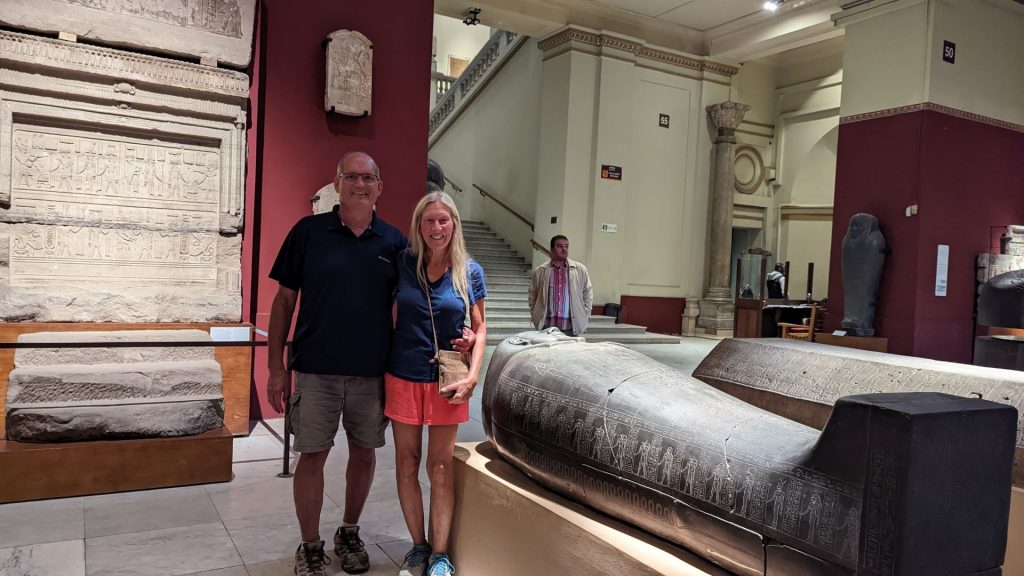
As my daughter said, “You can’t take it with you” is not a phrase that would have been understood in Ancient Egypt. They believed in a robust Afterlife and ensured that they would have whatever they needed when they arrived there. The richer you were, the more you packed. They placed food, beverages, mummified animals, cooking and eating utensils – you name it – in the tomb. They did not know what age they would be in the Afterlife, so they put shoes of various sizes in the tomb so the person would have proper footwear regardless of their age. Another favorite tidbit is that the wealthier Egyptians had more than one coffin. . . to show their wealth. But perhaps most impressive was the mummification process itself. They had it down to a science. The ancient Egyptians were ahead of their time in many regards.
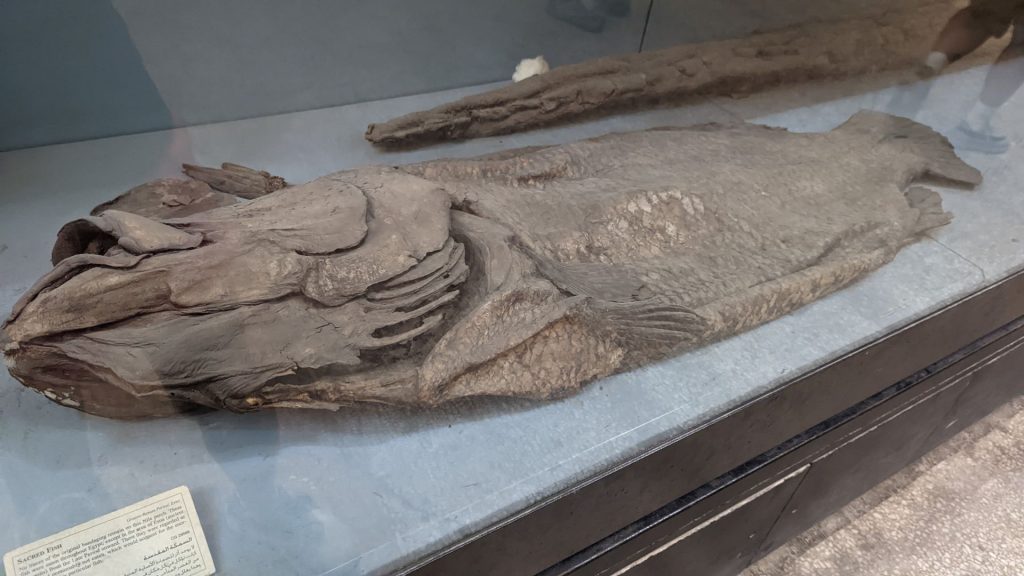
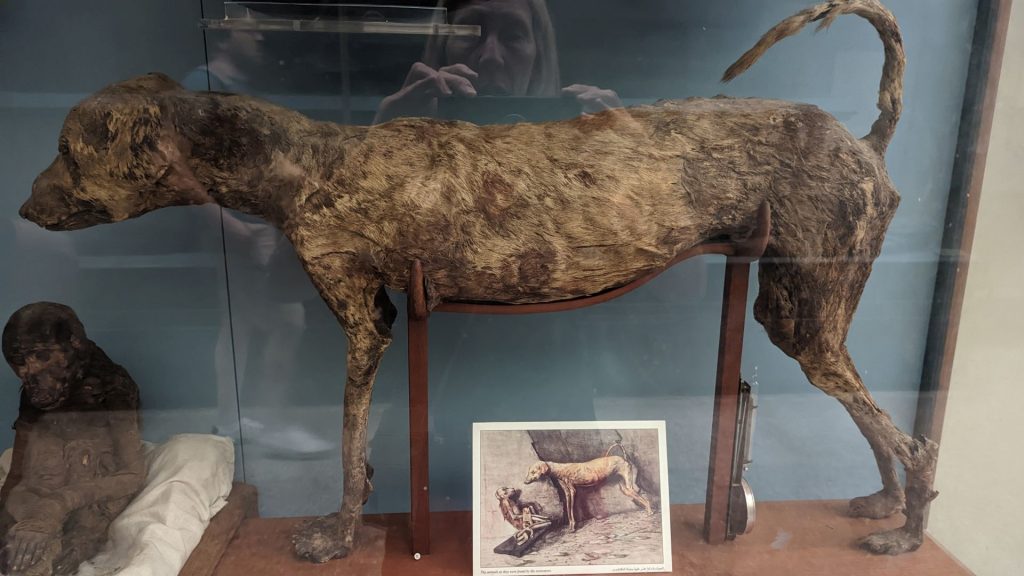
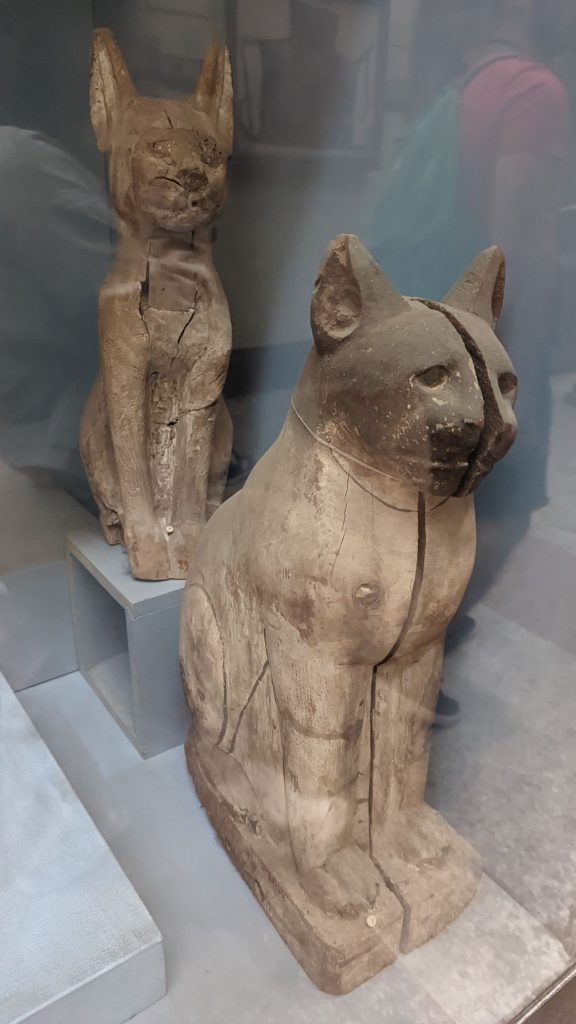
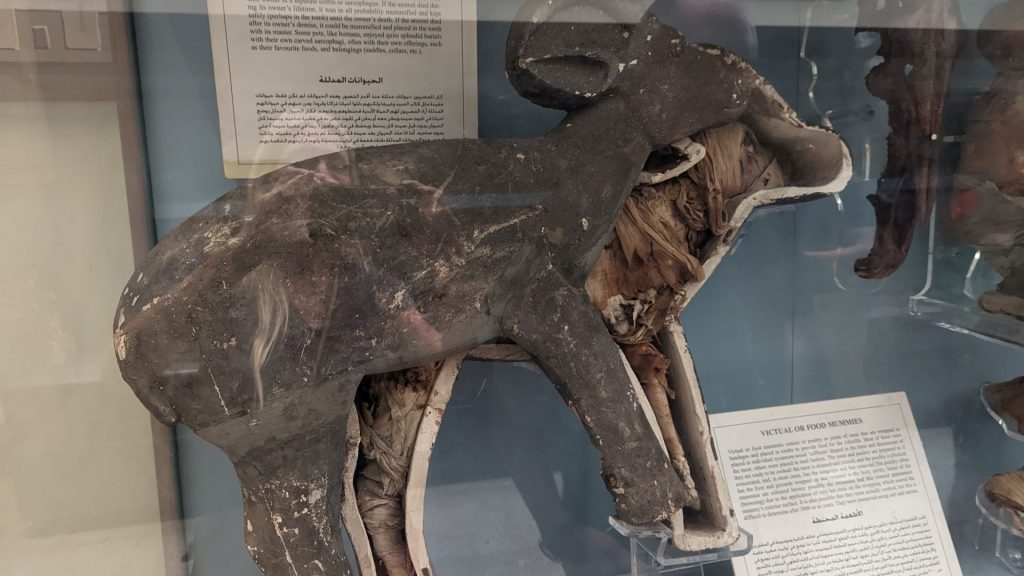
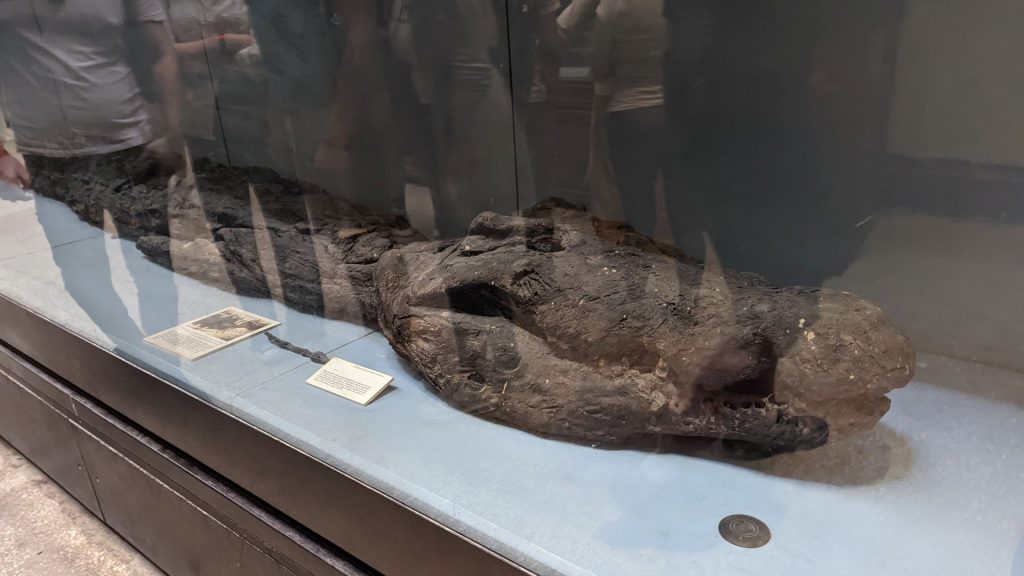
Actually, it is thought that ancient Egyptians included crocodiles and other animals to appease the deity Sobek associated with the Nile crocodiles.
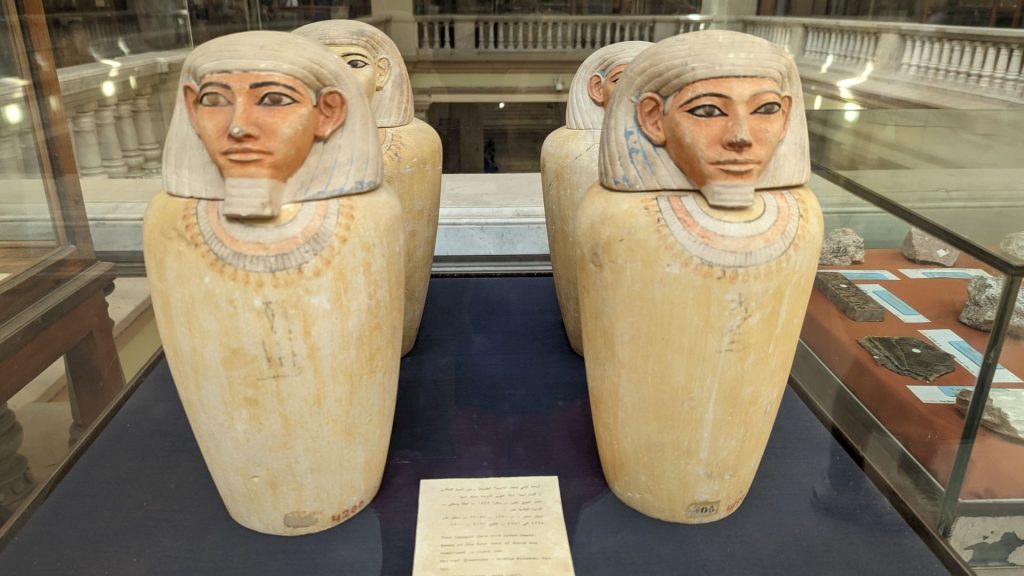
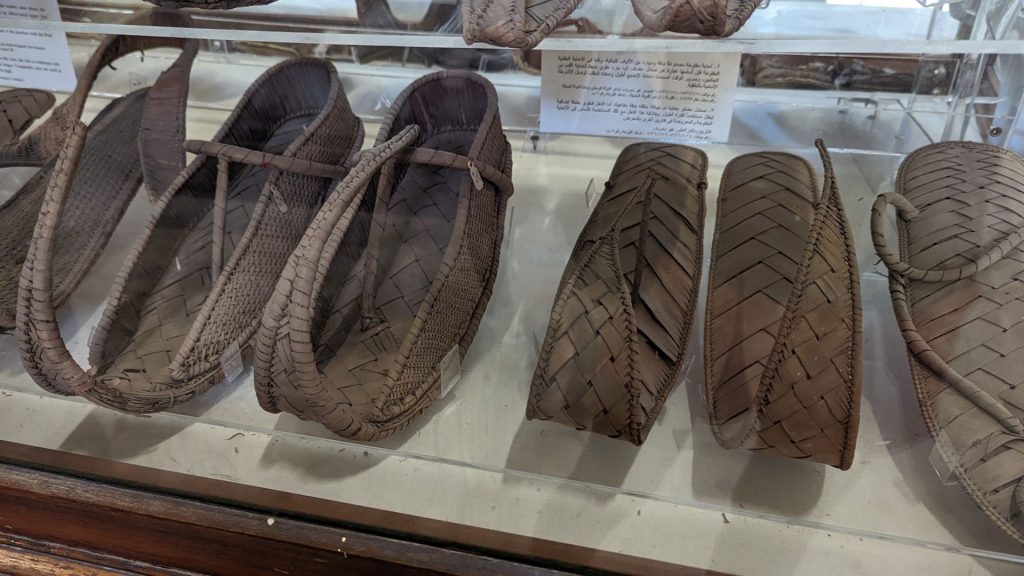
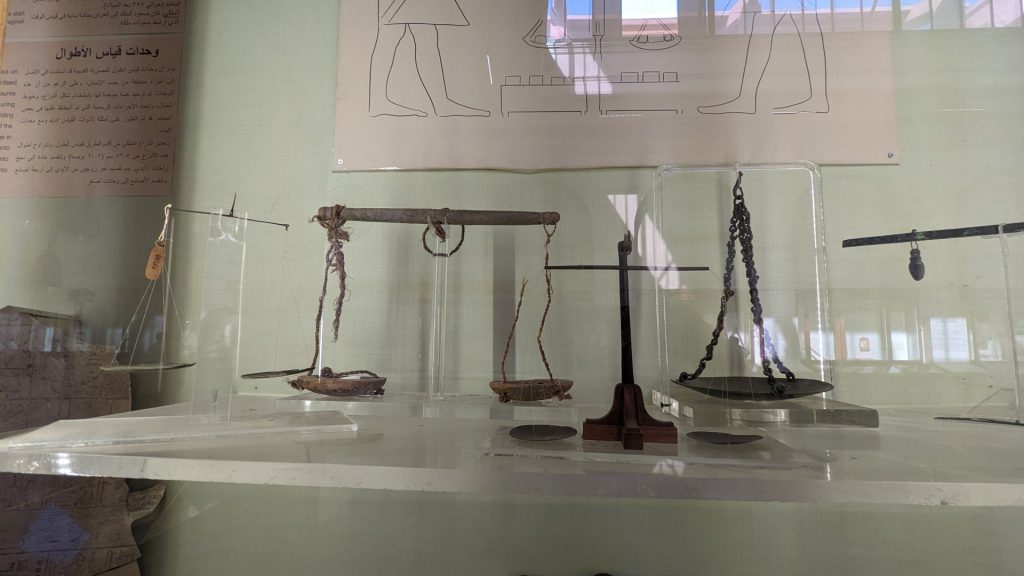
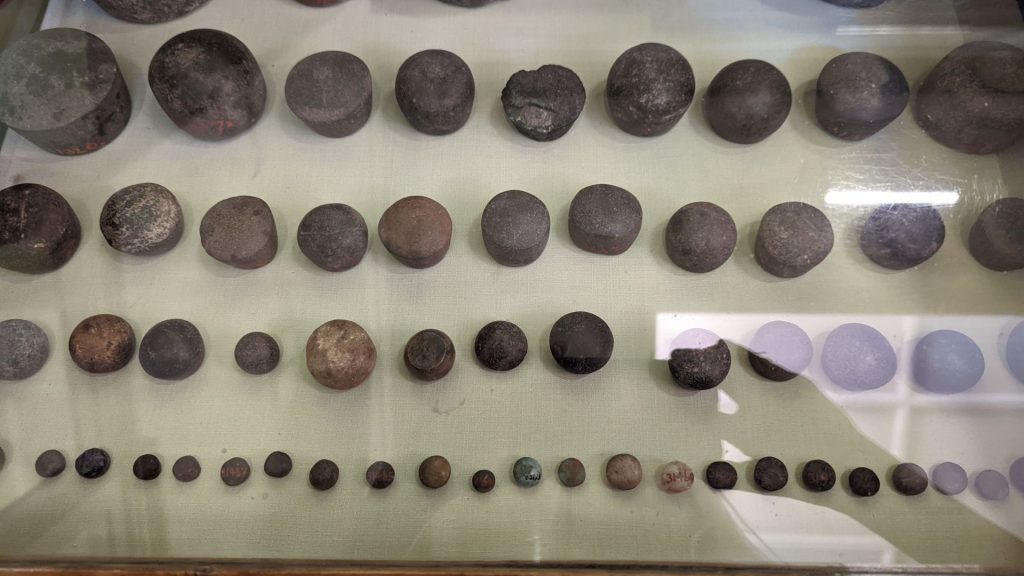
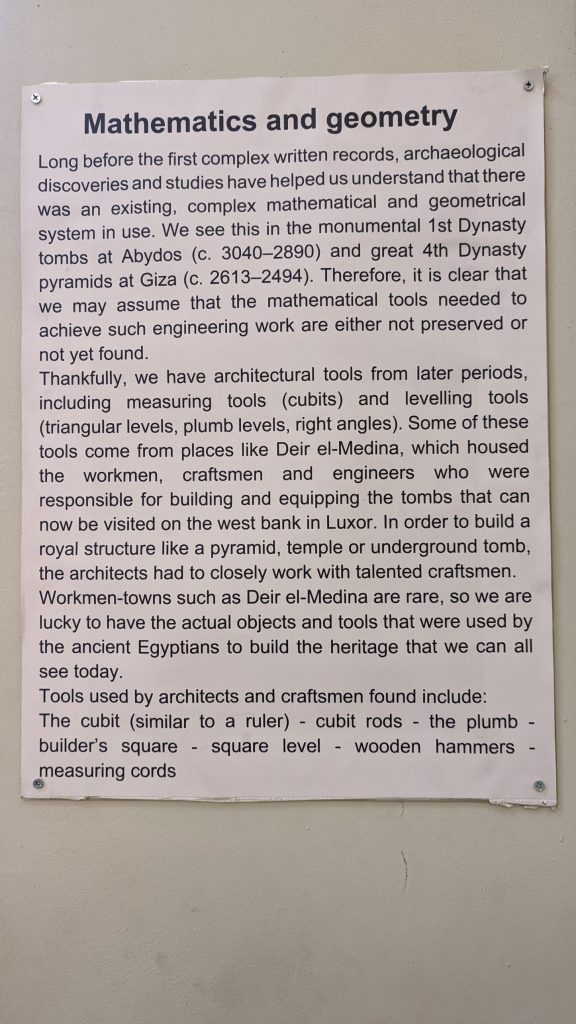
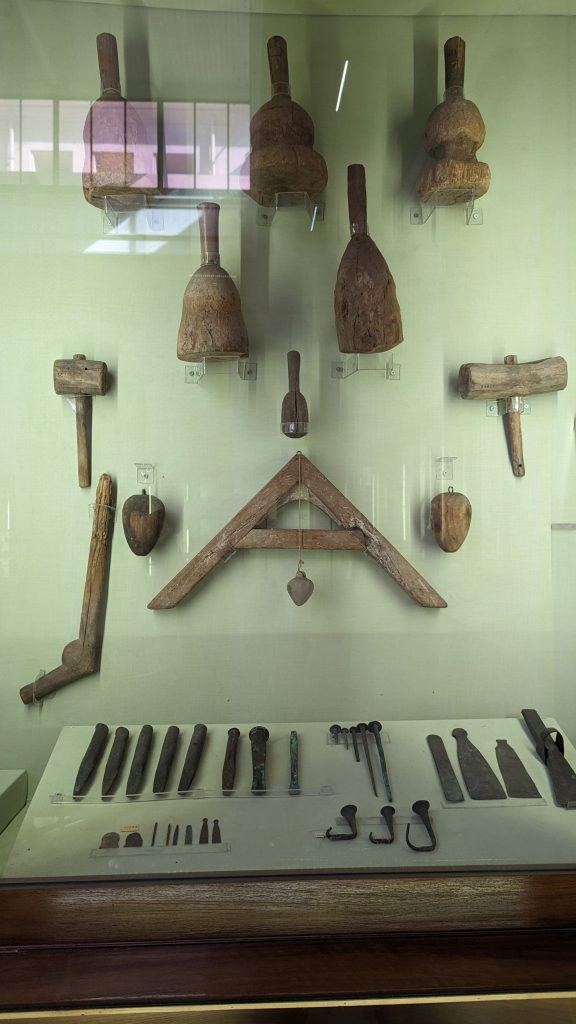
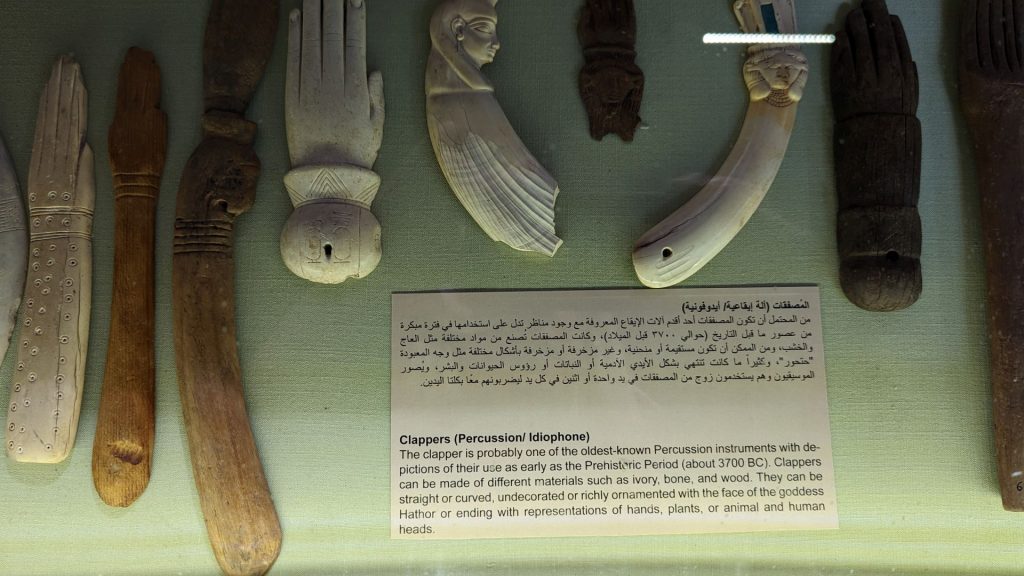
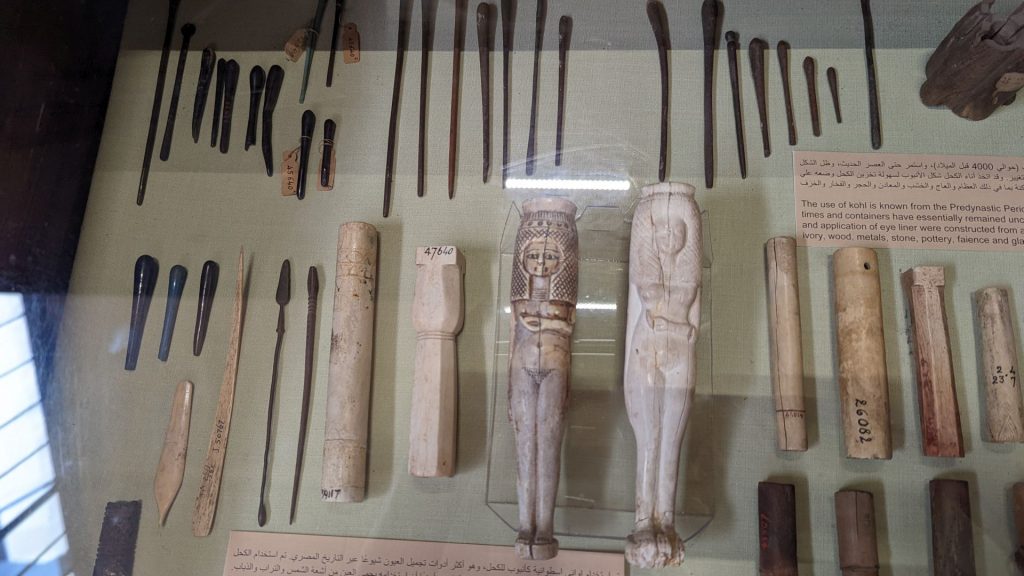
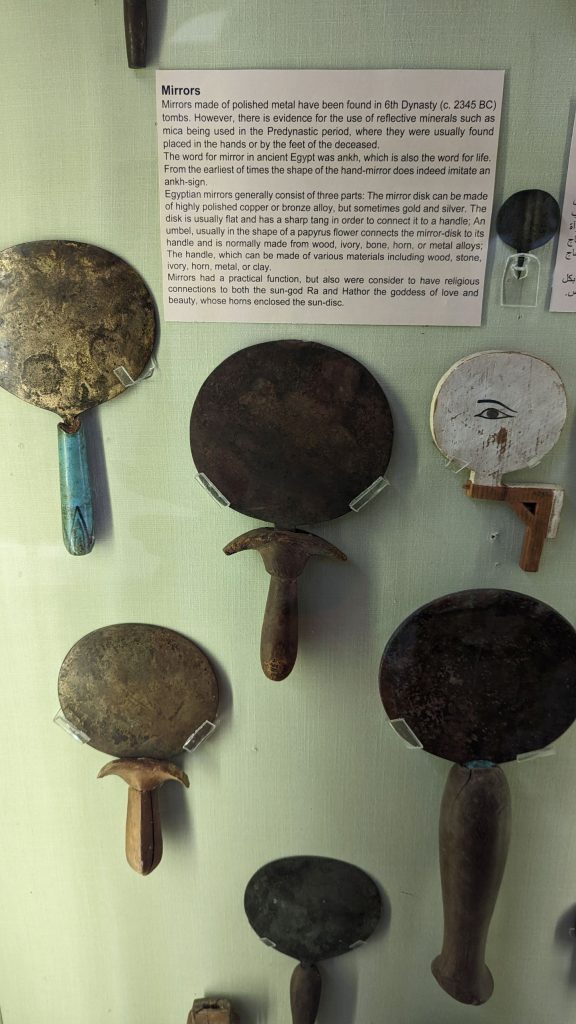
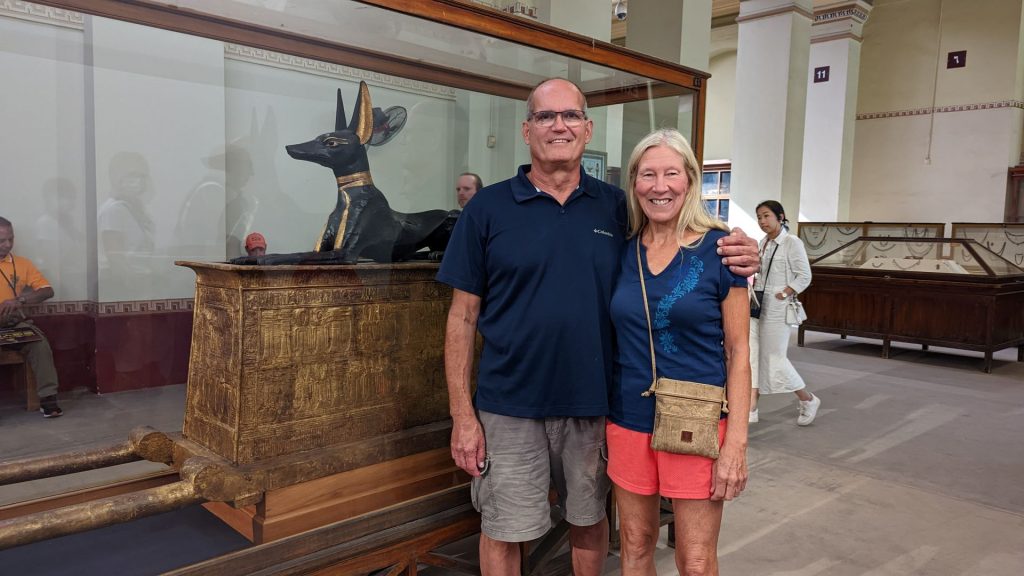
One of his prominent roles was as a god who ushered souls into the afterlife.
Anubis was depicted in black, a color that symbolized regeneration, life, the soil of the Nile River, and the discoloration of the corpse after embalming.
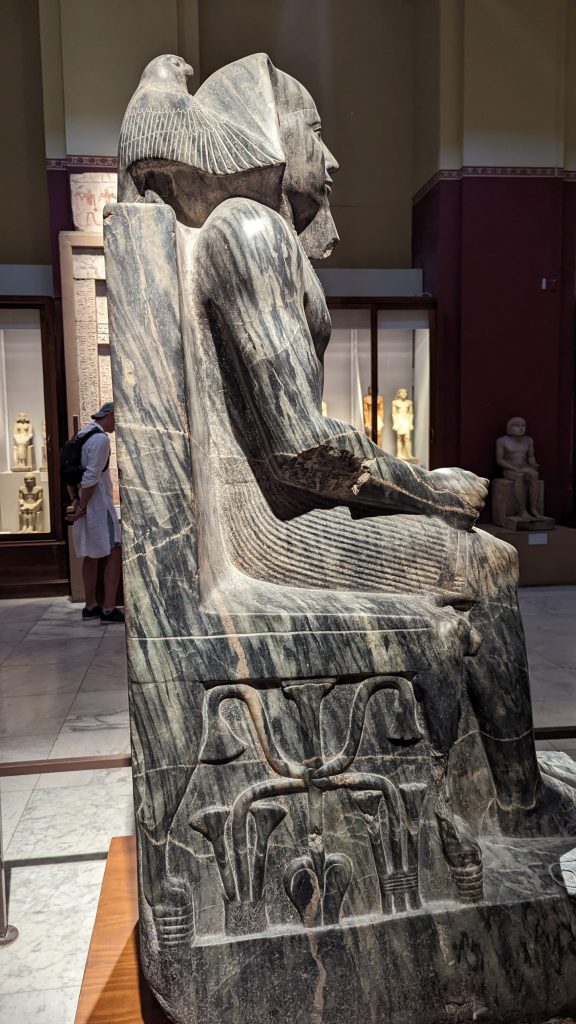
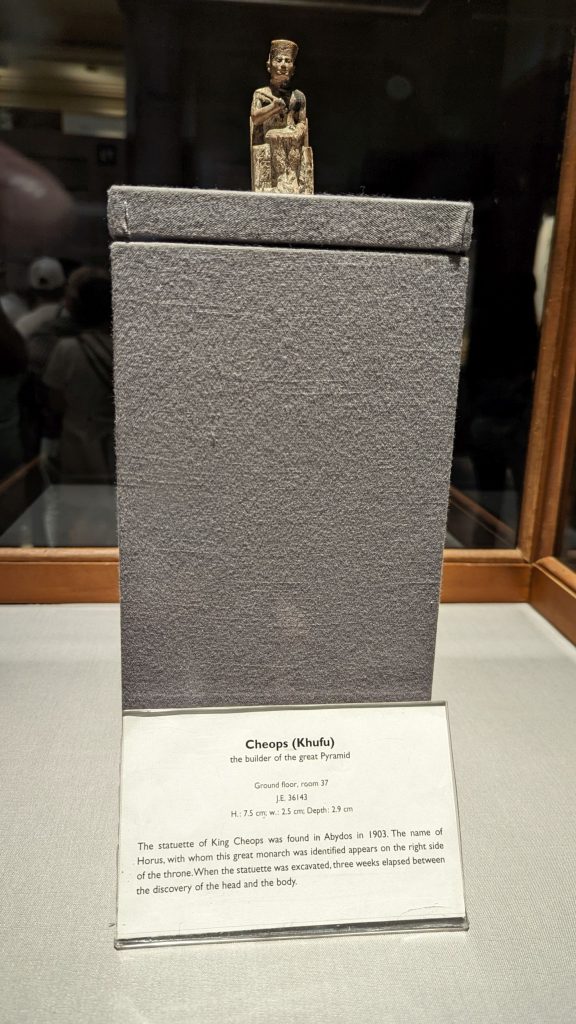
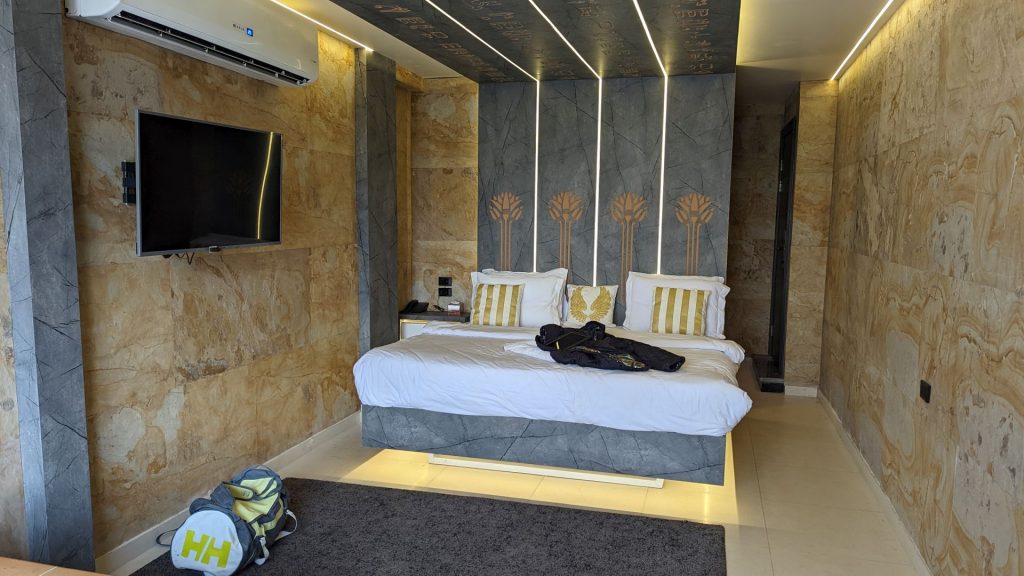
The hotel was The Great Pyramid Inn. It was marvelous! We could not have asked for a room with a better view. So unexpected and appreciated.
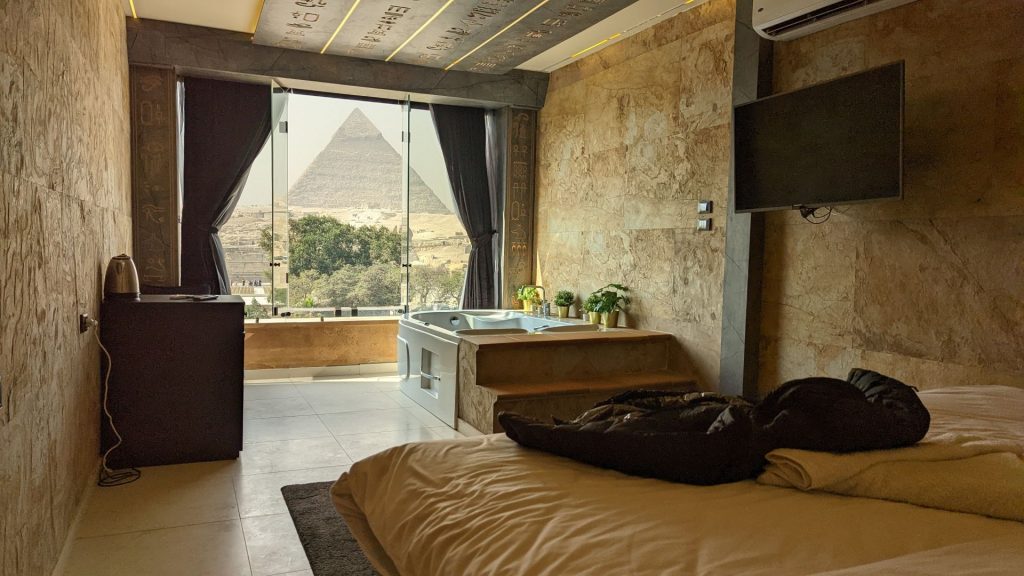
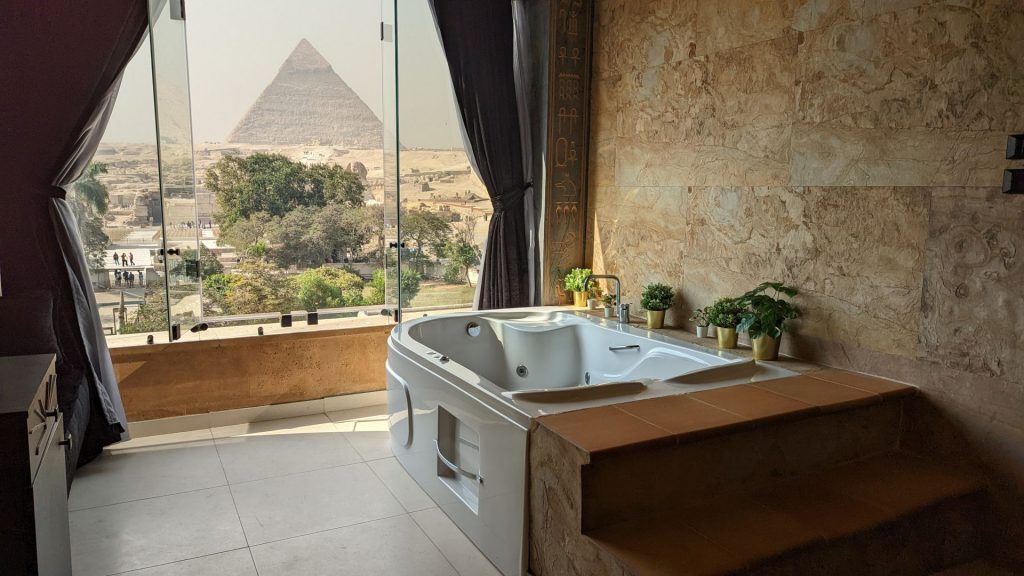
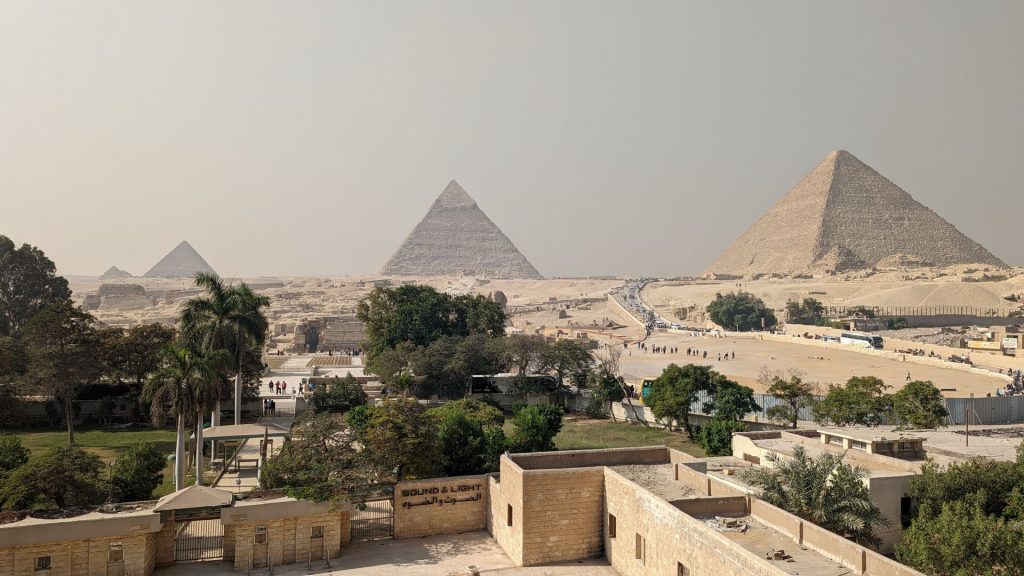
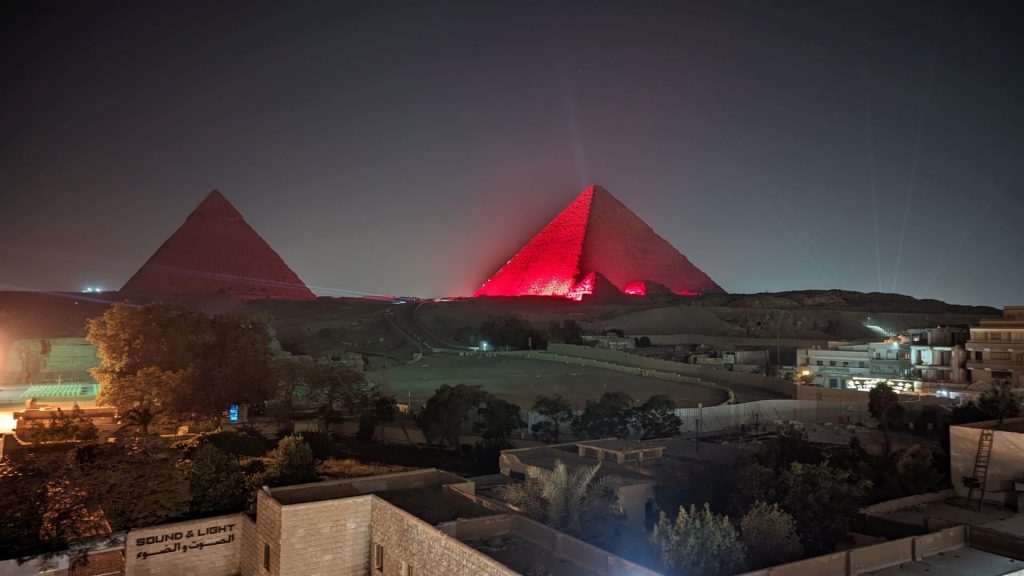
Watch for more in our next post.
